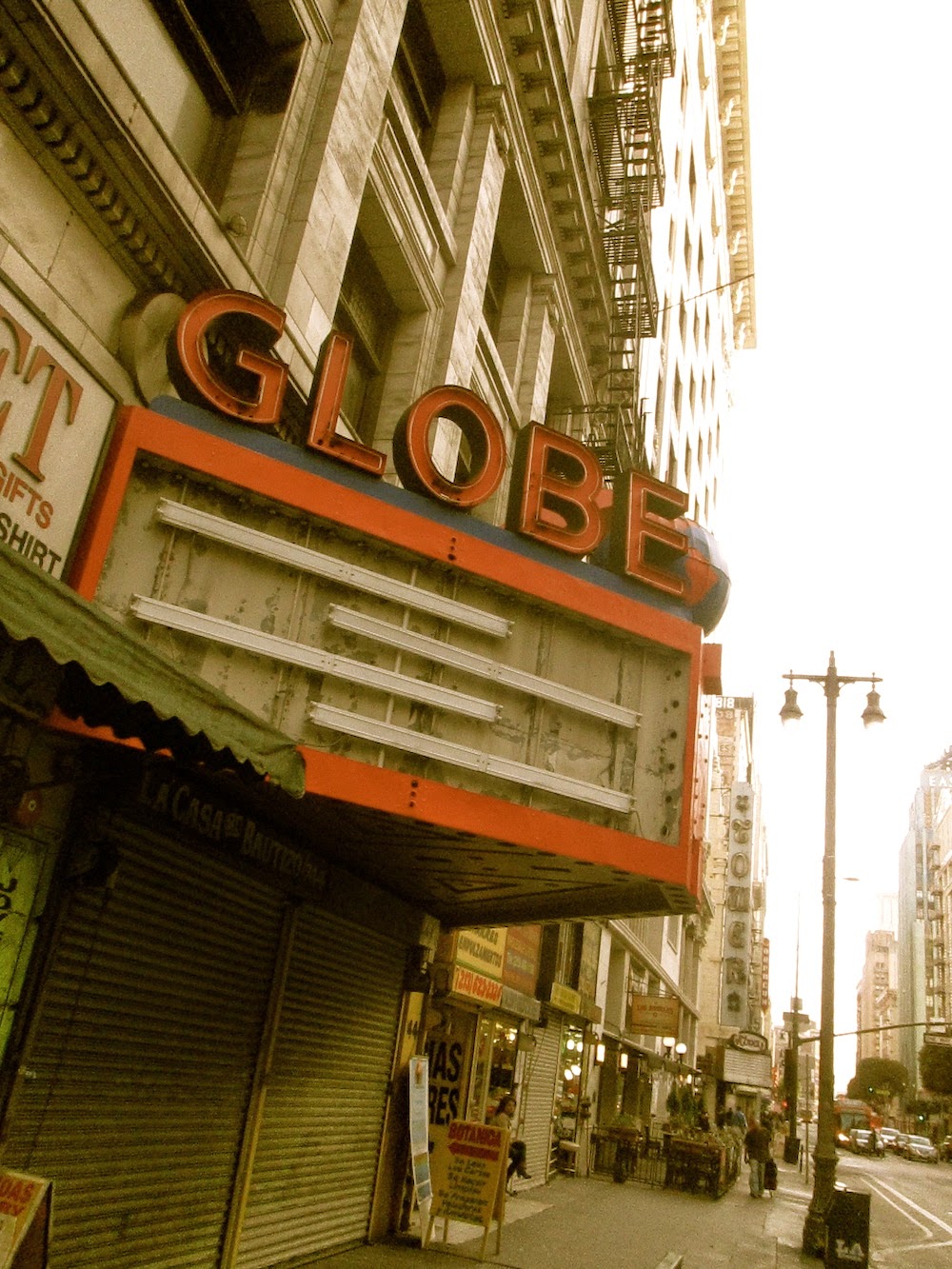The Arcade Theater was built in 1910 for Alfred Pantages, and was originally called The Pantages. Its name was changed to The Arcade in 1928. It closed down in 1992.
The Cameo Theater opened in 1910 as Clune's Broadway Theater for pioneer filmmaker and exhibitor Billy Clune. It was re-modeled and re-opened as The Cameo in 1926.
The Globe Theater opened in 1913 as the Morosco, a playhouse , built for producer Oliver Morosco. In 1930, the name was changed to Newsreel Theater. In 1949, it became The Globe.
The Los Angeles Theater, designed in French Renaissance style, opened in 1931 with the premier of Charlie Chaplin's City Lights. The theater stopped showing movies in 1994.
The Million Dollar Theater opened in 1918 as Grauman's Theater, built for Sid Grauman. It's grand opening film was "The Silent Man" starring William Hart. Lillian Gish and Charlie Chaplin, along with other luminaries, attended the premiere.
The Orpheum Theater opened in 1926 with two-a-day Orpheum circuit vaudeville. Many famous acts such as the Marx Brothers, Sally Rand, Duke Ellington and Jack Benny have performed at the Orpheum.
The Palace Theater opened in June 26, 1911 as the Orpheum. Many famous performers appeared on the stage here including Al Jolson, Sarah Bernhardt (1913), the Marx Brothers, W.C Fields and Will Rogers. In 1929, it was re-named the Fox Palace, and eventually became known simply as The Palace.
The Rialto Theater opened in 1917 as Quinn's Rialto by John A. Quinn. The initial presentation was "The Garden of Allah" accompanied by an original score performed by the Quinn Symphony Orchestra. Sid Grauman took it over in 1919 and gave it a remodel using William Woollett as the architect and it was then known as Grauman's Rialto.
The Roxie Theater, which opened in 1931, is the only art deco style theatre on Broadway. It was built for Gus A. Metzger and Harry Srere. The Roxie was the last of the Broadway theatres to open. It was closed in 1989.
Loew's State Theater opened in 1921 at one of downtown's busiest intersections, 7th and Broadway. The opening attraction was Metro's "Liliom." Marcus Loew was in attendance with a bevy of stars. Wonderfully successful as a vaudeville/movie house, it featured elaborate stage shows by Fanchon and Marco with leading performers. Judy Garland sang here when she was still one of the Gumm Sisters. It is now being used as a cathedral.
The Tower Theater opened in 1927 with "The Gingham Girl" (a silent) as the initial attraction. The film was accompanied by Stephen Boisclair on the Tower's two manual 10 rank Wurlitzer organ. In 1931 the Tower's organ was removed and reinstalled at the Los Angeles Theatre. The Tower was the first theatre downtown wired for sound and regularly ran Vitaphone short subjects. The Tower hosted a sneak preview of Warner's "The Jazz Singer" prior to its first run engagement at the Crtierion. It closed as a theater in 1988.
The United Artists Theater / Ace Hotel opened in 1927 with "My Best Girl," a silent film starring Mary Pickford and Buddy Rogers. The reopening of the building as a hotel was in January 2014 with the theatre following a month later.
























